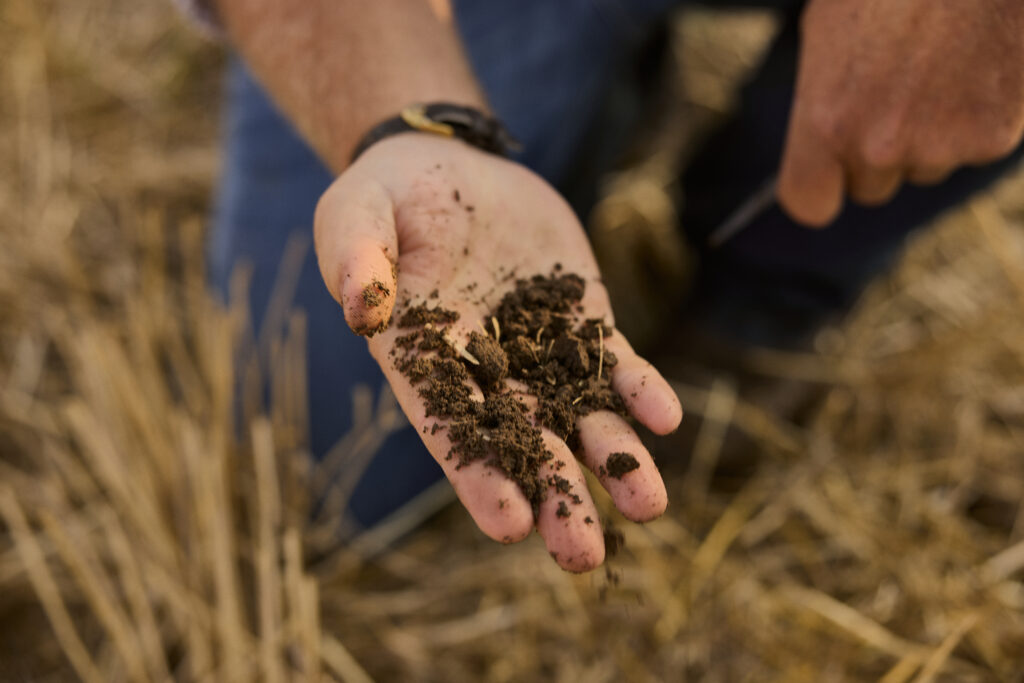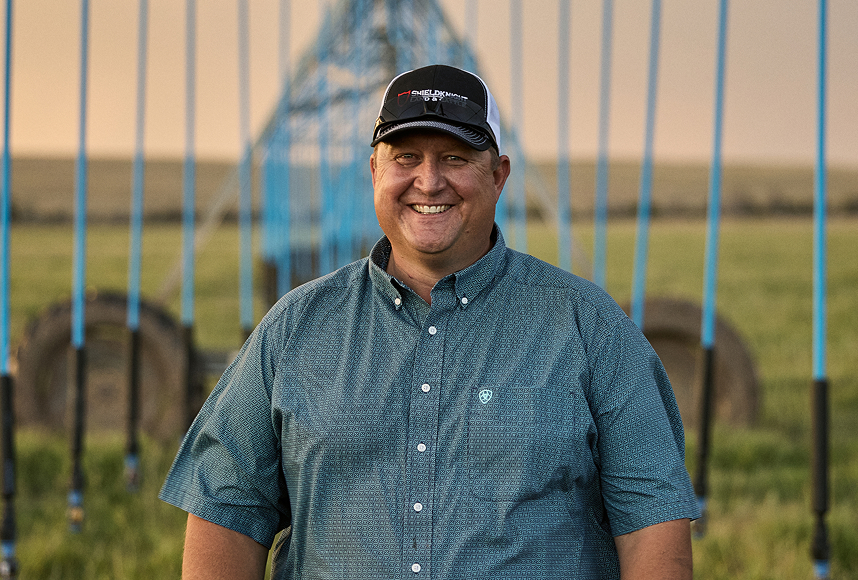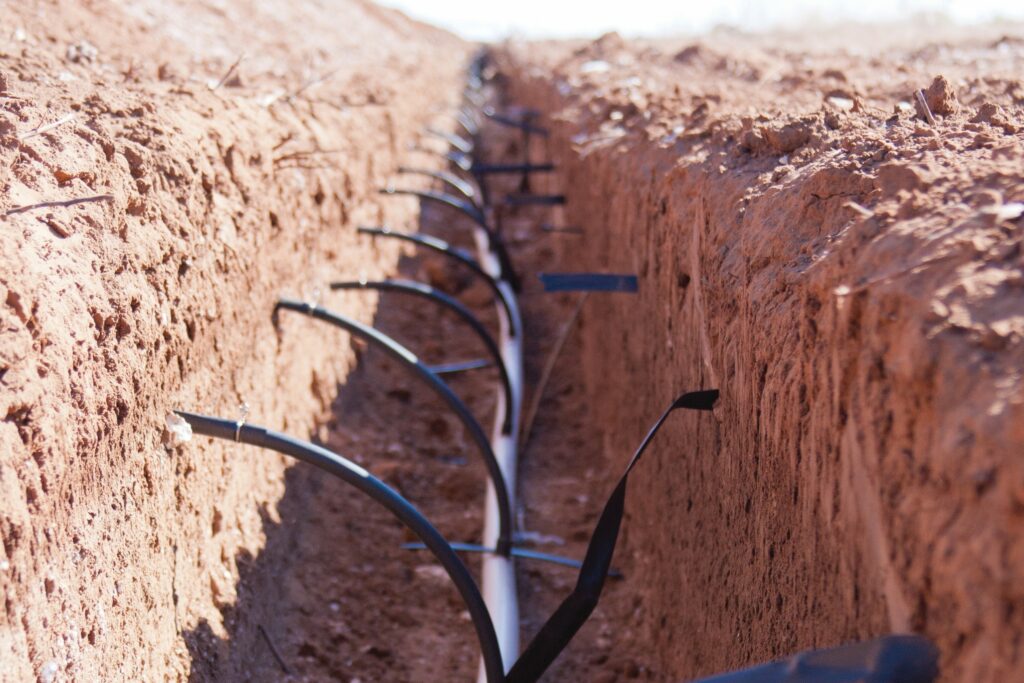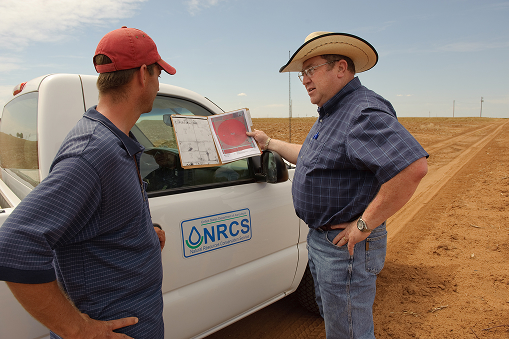Conserving and Preserving Water on Texas Farms
Ongoing drought conditions and an aging water infrastructure are key contributors to the sharp decline of available groundwater in Texas. In response, farmers are working hard to establish effective practices and helpful partnerships to grow more food using less water. Successful results are essential for Texas to continue to grow and thrive.
Protecting water sources involves conserving and preserving both soil and water simultaneously. In other words, saving water in Texas is an impossible feat without farmer actions that improve the health of their soil.

“The water cycle and soil are linked and can’t be separated.
They just go together like peanut butter and jelly.”
John Sacket
Natural Resources Conservation Service Soil Scientist
Protecting Water Sources Requires Healthy Soil
Healthy soil is the foundation for meeting the food needs of Texans. Farmers invest in practices to enrich their soil because soil provides five essential functions that impact water:
- Regulating water flow
- Sustaining plant and animal life
- Filtering contaminants
- Providing physical stability and support for plant roots.
- Cycling nutrients
Conserving and Preserving Soil and Water
According to Ernesto Favela, NRCS District Conservationist in Lubbock County, Texas, these four principles of soil health promote improved soil structure and water conservation for farmers:
Maximize Biodiversity
Diversity on a farm provides a break in disease and weed cycles, improved plant growth and a better habitat for organisms that live within the soil. Common farmer practices that improve diversity include the incorporation of crop rotation and/or the integration of livestock, like cattle or sheep.
Maximize Presence of Living Roots
Plant roots provide structure for soil to prevent erosion from wind or rain. The adoption of practices like crop rotation promotes helpful root growth. Proper fertilization is also essential in order to maximize healthy root systems.
Maximize Soil Cover
Farmers leave plant residue behind after harvest, or plant cover crops, for good reason. It keeps water on the field and out of waterways. The result is maximizing water from irrigation and rainfall, as well as protecting local waterways from soil runoff that contains nutrients intended for plant growth.
Minimize Disturbance
It is impossible to avoid some disturbances to soil when planting crops, applying fertilizers and protectants, running harvesting equipment and grazing livestock. But minimizing these disturbances reduces soil compaction, improves soil health and leads to less water runoff. Farmer options to minimize soil disturbances include practices like strip tillage or no tillage and incorporating fencing for a system called “prescribed grazing”, which is a sequence of grazing and resting grassland to prevent livestock from overgrazing pastures.
Conserving Soil and Water Requires Efficient Irrigation
While investing in soil health is an important practice for protecting water sources, Texas farmers are also investing in new and different types of irrigation systems to replace their aging, less efficient equipment.
Efficient Irrigation: A Costly Upgrade

Center-Pivot Irrigation Systems
For example, updating an irrigation system to a center-pivot can significantly improve water efficiency and water distribution. Center pivot irrigation systems allow sprinklers to rotate from a central pivot point, which waters crops in a circular pattern. The advantage for center-pivot irrigation systems is efficiency – the water efficiency rate can be more than 90%. Unfortunately, the cost of center-pivot systems is often prohibitive for farmers to consider the investment alone.
Drip Irrigation Systems
Drip irrigation systems deliver water directly to the roots of a crop, minimizing water loss through evaporation and runoff. Drip irrigation can also play a helpful role in controlling weeds. But similar to installing center pivot irrigation systems, drip irrigation options are often cost-prohibitive for most farm businesses to invest in alone.

Overcoming the Costs of Conservation
Thankfully there are programs that provide both technical assistance and cost-sharing to help farmers invest in updated irrigation equipment and irrigation practices. In particular, the USDA invests money in the Environmental Quality Incentives Program (EQIP) through the NRCS in Texas.
EQIP can provide partial reimbursement to qualifying farmers for their purchase of a more efficient irrigation system. NRCS technical assistance is also available to advise the farmer in optimizing the new system for their particular soil, land and operation.
